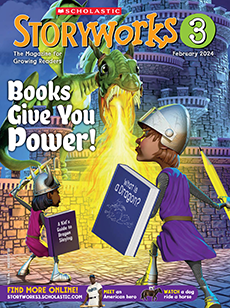I know what kids on Earth must say about living on the moon. Sure, we don’t have oceans or forests. No rain, no wind. No animals. But to me, it’s beautiful . . . so still and peaceful, you can hear your own thoughts.
I’ve lived on the moon my whole life. People have been here since the year 2125, when the first moon colony was set up. Now, in 2175, scientists like my mom and dad live here and work on exciting new moon projects.
I think the moon is the coolest place in the universe. But my best friend, Emma, feels the opposite.
“Robbie, it’s the most boring rock in the universe,” she always says.
Emma can’t wait to leave. Her dream is to move to Earth and study whales. Sometimes it feels like she’s already gone, even when she’s standing right next to me.

